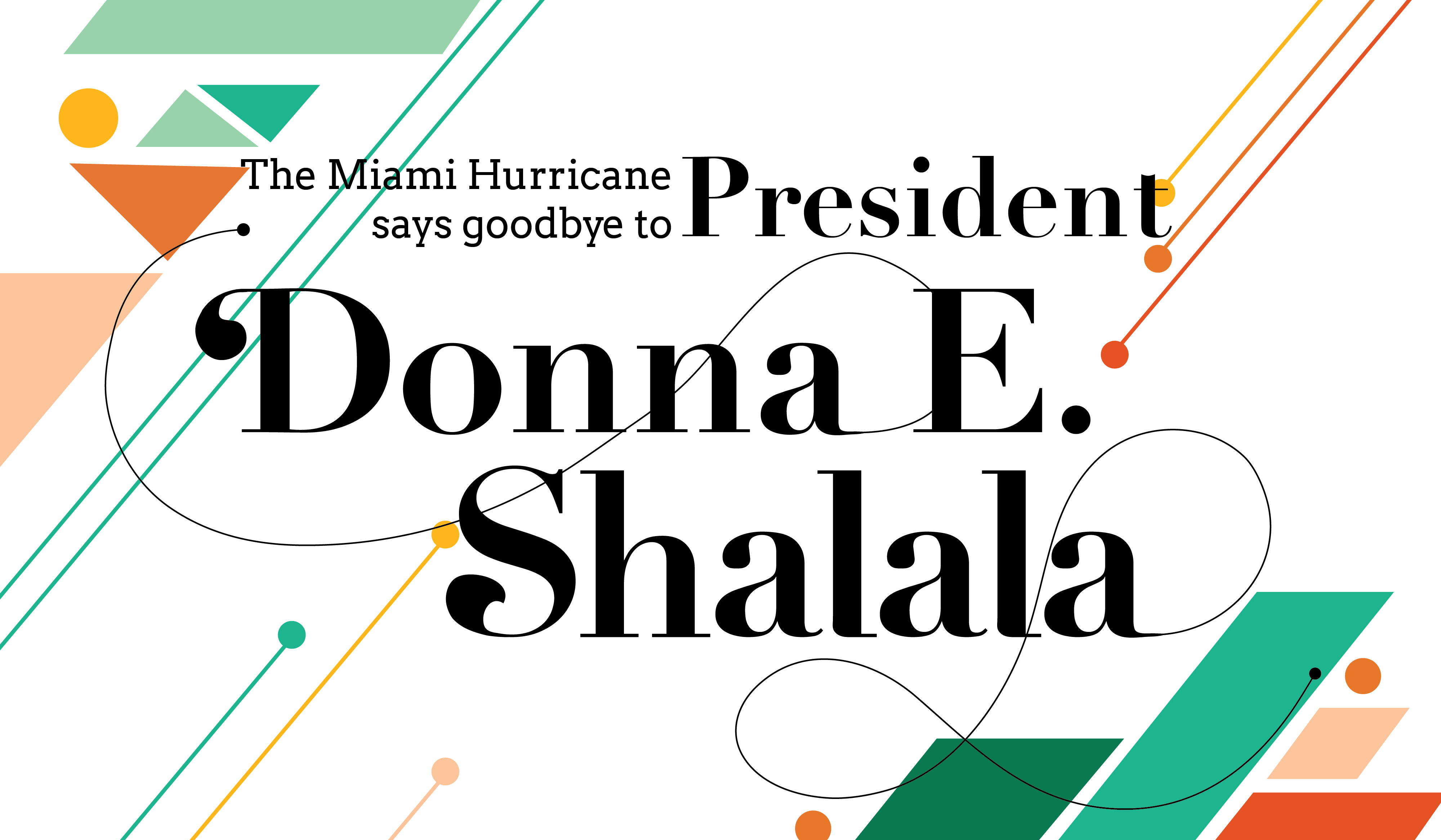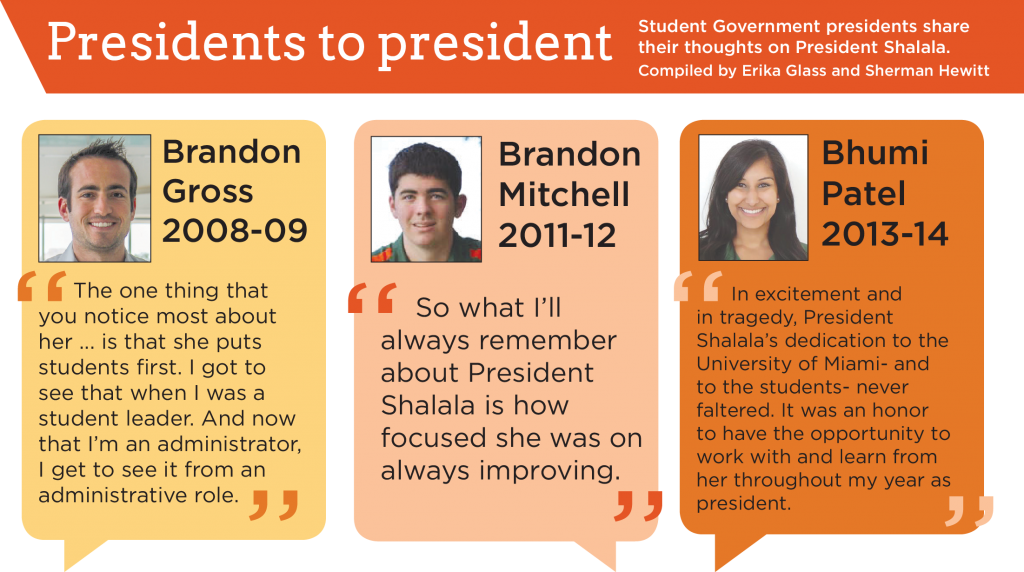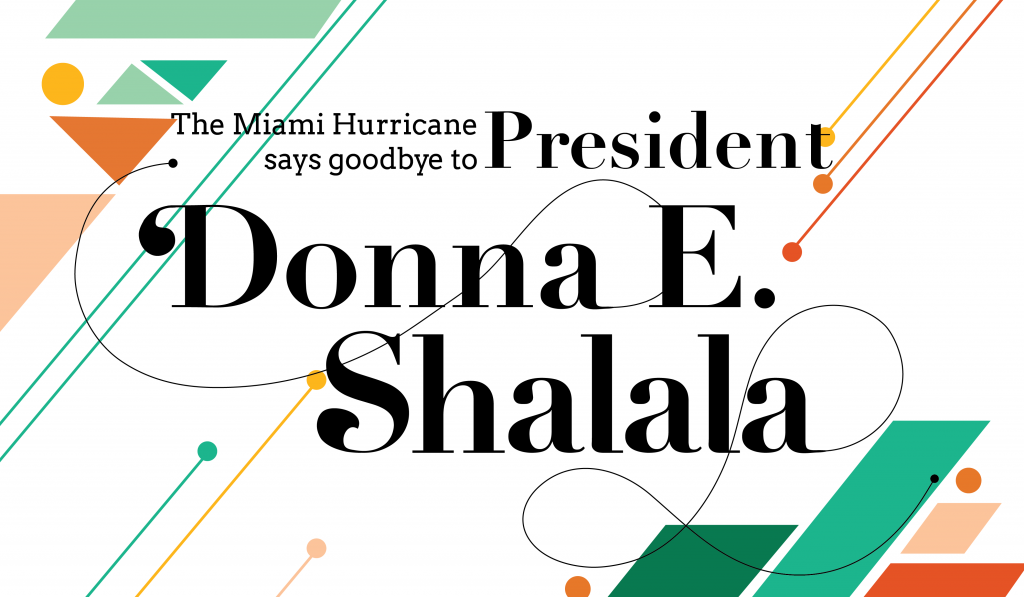
The first presidential debate in 2004. The Student Activities Center in 2013. $3 billion raised over 14 years.
The list goes on and on.
President Donna E. Shalala placed the University of Miami in the national spotlight. Her rock star status transformed the campus’s landscape and culture, leaving UM a top 50 institution with more new buildings and facilities than when she arrived in 2001.
Her farewell tour has been busy. This past year, Shalala has been prepping for the next stage of her career as head of the Clinton Foundation located in New York City. She officially steps down at the end of the academic year.
Still, she has some unfinished business to take care of before an Empire state of mind sets in.
“I’m so jammed up with things to do that I’m sort of in my zone,” Shalala told The Miami Hurricane in an April 6 interview. “So I’m not thinking about very much except that I have got to do about 20 appointments a day because everyone wants to see me before I leave.”
SEE ALSO: Interactive timeline of Shalala’s presidency
Shalala plans to return to the faculty as a professor of political science and health policy. She earned a bachelor of arts degree in history from Western College for Women, which merged with Miami University in the ‘70s.
She also earned a doctorate in public affairs from Syracuse University in 1970 and has honorary degrees from schools including New York Law School, Princeton University and the University of Michigan.
“A long time ago a friend advised me to always leave a job when you still love it,” Shalala wrote in her email announcing that she would be stepping down, sent university-wide last September. “That is certainly the case here.”
Shalala wasn’t new to what it takes to run a university. Prior to arriving at UM, she was chancellor for the University of Wisconsin-Madison from 1987 to 1993 and president of Hunter College of the City University of New York from 1980 to 1987.
In November 2000, fresh off her term as former Secretary of Health and Human Services for the Clinton administration, Shalala was then named UM’s fifth and first female president. Aileen Ugalde, Shalala’s former chief of staff and UM’s current general counsel, was part of the 2000 presidential search committee that ultimately selected Shalala.
“Whatever room she’s in, she always struck me as being the smartest, the shrewdest, the bravest. She sees opportunities before the rest of us do,” Ugalde said. “That’s what I think people refer to when they say a ‘visionary leader.’”
Although her tenure lasted 14 years, Shalala almost decided to leave after 10 had it not been for the economic downturn.
“So I decided to stay both to raise money but to make sure we shifted money to retain our students at the same time,” she said.
Regardless of how long she stayed, Shalala has left her mark on the academic, social, and economic fabric of campus.
Campus Life
The 2015 campus is vastly different from what it looked like when Shalala took office in 2001.
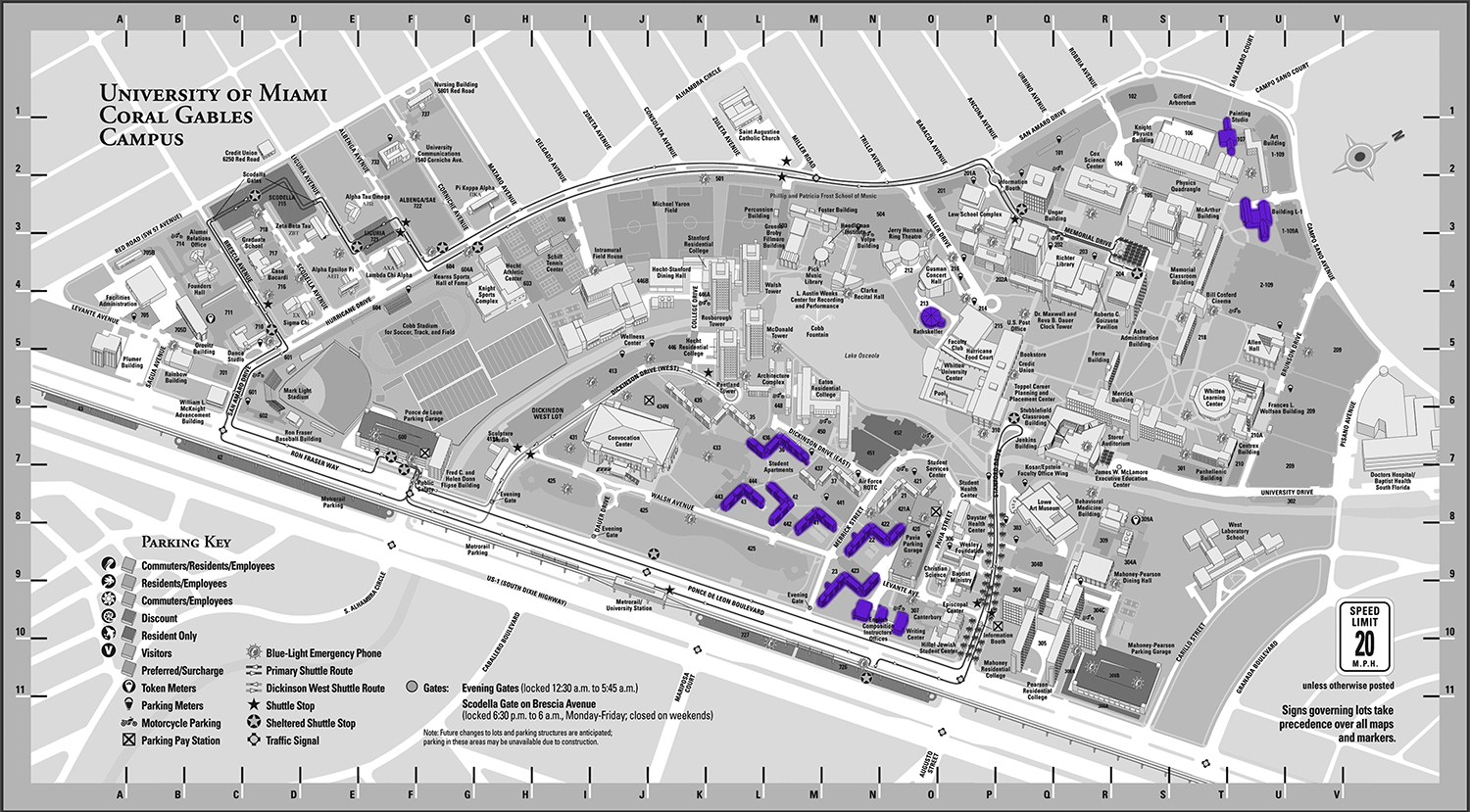
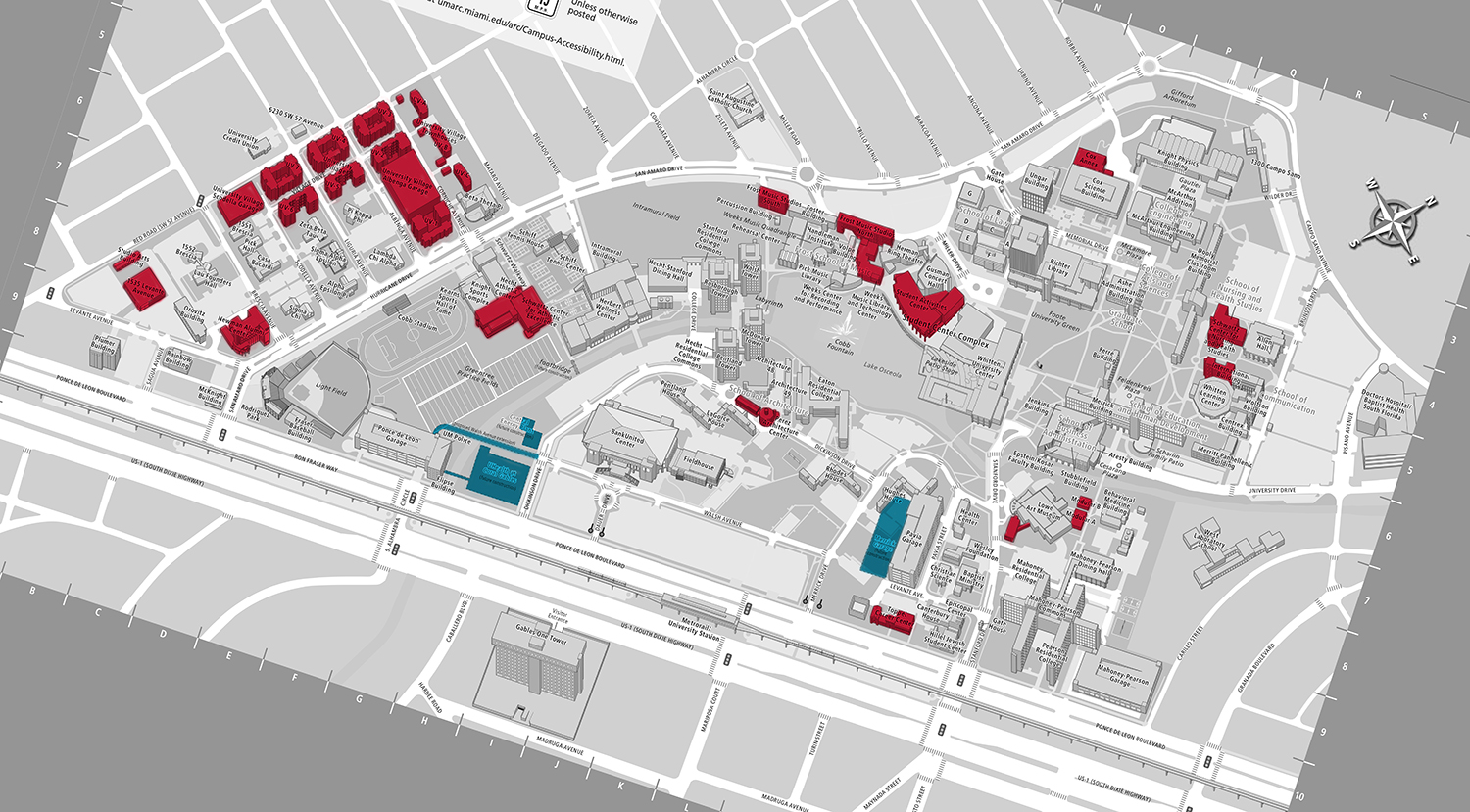
Purple represents torn down structures. Red represents new buildings, and blue represents future structures.
Pat Whitely, vice president for Student Affairs, said that the campus culture now puts students first.
“President Shalala has transformed the U and the student experience as a much more student-centered, much more comfortable place and environment,” she said.
Janet Gavarrete, the associate vice president of campus planning and development, says that Shalala’s vision has made an impact that will continue after her time at the university ends.
“If you wanted to measure her impact by what you can see, then you can see a lot and it’s a good lot,” Gavarrete said.
Gavarrete also mentioned that, though Shalala’s impact on the campus landscape is visible, it’s the intangible things that will make a lasting difference.
“[The Student Activities Center] represents the body of where the student soul is, and that’s very big. It’s a lot bigger footprint than just the building,” she said.
The SAC is Shalala’s most recognizable contribution at the university. The center, which hosts more than 8,000 events per year, houses the Rathskeller and student organization suites.
Whitely often tells the story of how one day in 2003, she and Shalala were walking around Lake Osceola near the SAC. The president proposed building a new student center in place of the previous Rat.
According to Whitely, the president made it a point to make sure the Rat was included in the plans for the building. The Rat happens to be Shalala’s favorite spot on campus.
From that point, Whitely says her staff took it from there. They presented their plans to Shalala and the Board of Trustees in 2005 and moved forward with the plans for the building.
“It was her vision that we took and made reality, and you look at what a difference that Student Activities Center makes each and every day,” Whitely said.
According to Gavarrete, along with the creation of the SAC, Shalala pushed for the renovations of the Hecht Athletic Center, Wellness Center, the dining halls, the Memorial Building and Learning Center classrooms, the Cox Science Plaza, and the alumni building, among others.
Another notable contribution to the university under Shalala’s leadership was the construction of the University Village apartment complex in 2006. Before the completion of the UV, the university was only able to house about 27 percent of students, according to a report in The Miami Hurricane.
SEE ALSO: Schwartz Center improves caliber of Miami’s athletic facilities
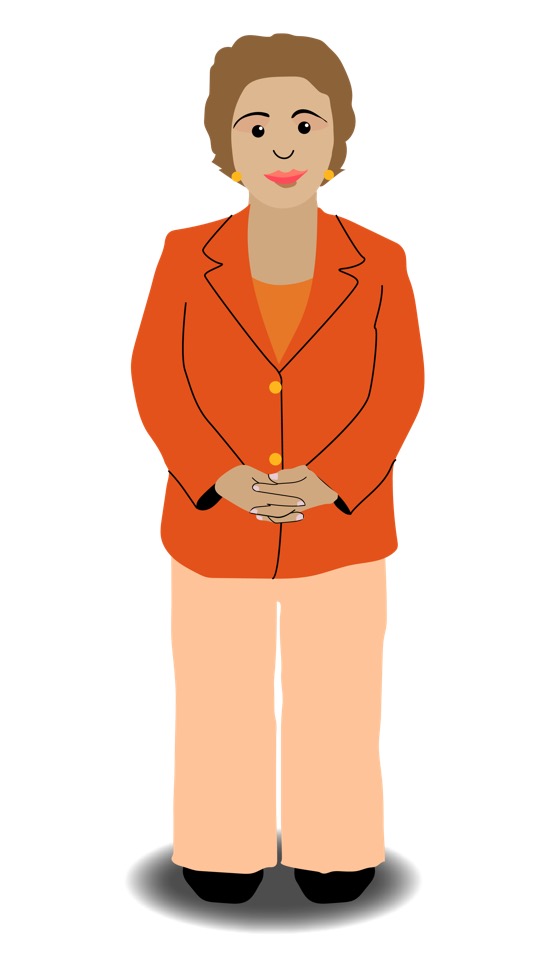
Given these noticeable improvements to student life, Shalala has often been regarded as being a “student-centered president.” Those who work closely with her marvel at her dedication to teaching.
Aileen Ugalde, Shalala’s former chief of staff, mentioned that Shalala cherished the time she spent preparing for and giving her lectures. Shalala joined the political science faculty in 2001 and has taught a course in health care politics for more than 10 years.
“She dreamed big, but at the heart of almost everything, was always the kids,” Ugalde said. “That’s why she insisted on teaching.”
Though her accomplishments showcase her dedication to elevating student life, Shalala doesn’t agree with the student-centered label. She says that while it’s important to listen to the students, her focus has been hiring top faculty to provide the best education and collegiate experience.
“That’s a term that someone invented, and I think it’s very nice and I certainly paid attention to the students and to their needs, but I also paid a lot of attention to what we needed to do on the research side to build a great research university,” she said.
Shalala also took on the project of revamping the commencement ceremony. Ugalde said graduation used to be a mass ceremony on the Foote Green.
“The whole tradition of the graduation, that every single person who’s receiving a degree of any kind from the University of Miami, would walk across the stage, be projected onto the screens, and shake the hands of their dean and their president, that was all an idea she had for us,” Ugalde said.
But Shalala’s dedication to students doesn’t end when they receive their diplomas. The president also made an effort to actively include the alumni community.
“We made a conscious decision in 2001 to make major investments in alumni and raise the money for an alumni center, and we were single-minded about that because our alumni weren’t really bonded to the university,” she said.
Alumni, especially former Student Government presidents who work closely with university administration, say they remember her for her drive and passion for the university.
Brandon Mitchell, 2011-2012 Student Government President, recalls that Shalala was dedicated to persistent campus improvement.
“Our campaign was based on ‘Taking U Forward’ and that really resonated with her because that’s what her goal was,” he said.
Bhumi Patel, 2013-2014 SG President, shared similar sentiments.
“Through her leadership, the university came together as a community to share in joyous moments and support each other in difficult times,” Patel said. “In excitement and in tragedy, President Shalala’s dedication to the University of Miami – and to the students – never faltered.”
Brandon Gross, who is the associate director of the Student Center Complex and served as SG president in 2008, says that seeing the growth and evolution of the university since his time as a student has been exciting to watch.
“My degree has continued to be worth more and more each year because of the types of students we’re bringing in,” he said.
Brianna Hathaway, SG president-elect and one of the program coordinators for Orientation, believes that Shalala’s approachability is what will make her a memorable president.
“I think the fact that President Shalala is extremely student-centered is what makes such a remarkable impact on new students during Orientation,” Hathaway said. “Whether it is the President’s Picnic or any other orientation event, she is always approachable and willing to interact with students.”
Ugalde attributed the university’s growth to Shalala’s “big” dreams for UM.
“So it was us seeing ourselves through this kind of over-the-top vision of the world and our place in it that really prompted the university to rise to the occasion,” Ugalde said.
Academics
Aside from her contributions to campus life, Shalala improved the university’s academic standing.
The clearest measure of this improvement is the annual Best Colleges rankings list from U.S. News & World Report. The university jumped from No. 64 to No. 48 over Shalala’s 14 years.
In 2012, the university achieved its highest ranking ever at No. 38.
Infographic by Luke Pukatch
She attributes this astronomical increase to the quality of the students, faculty and “world-class scientists and clinicians” at the Miller School of Medicine.
“This made a huge difference in terms of our national reputation,” Shalala said.
U.S. News generates this numerical ranking by entering certain values into a formula that changes every year. These values include mean SAT scores, the quality of the freshman class and other measures, such as retention rates.
Between 2001 and 2013, the mean SAT score of the incoming freshman class rose from 1190 to 1325. Additionally, more than 70 percent of incoming first-year students ranked in the top 10 percent of their high school graduating class. This increased from 51 percent in 2001 when Shalala began her tenure.
“We have a joke that we have raised standards so high that only the provost, Thomas LeBlanc, could get in [to UM]. The rest of us couldn’t get in,” Shalala said.
Thomas LeBlanc, who became UM’s provost in 2005, says the numbers only tell part of the story. He stressed that Shalala’s student-centered approach helped put the university in the academic spotlight.
As provost, LeBlanc oversees all academic affairs for the university. He will serve as interim president after Shalala steps down at the end of the academic year and before Dr. Julio Frenk begins his term as UM’s sixth president Sept. 1.
LeBlanc is especially proud of the rise in the university’s graduation rate, which has increased from 63 percent to 81 percent since 2001.
“We care about the graduation rate. It’s a measure of our student success,” he said.
He says that a major reason students didn’t graduate was because they couldn’t afford it.
According to Shalala, the Momentum campaigns have helped generate more scholarships to alleviate students’ debt. UM does not provide 100 percent need-based aid, but offers merit-based aid that is not based on students’ financial situations.
LeBlanc also emphasized Shalala’s concern for students at the most intimate level: in the classroom.
Unlike most college presidents who may not interact directly with students, Shalala has taught her politics of health care class once a year for more than 10 years.
It was during this class when Shalala began addressing pre-medical students’ concerns about applying to medical school, LeBlanc said.
“She’s been down in the trenches,” he said. “She’s interacting with them and seeing what the problems are.”
Some of these problems included students not performing well on the MCAT, the standardized exam required for admission to most medical schools, as well as offering advising for students who decided they do not want to become medical doctors.
The pre-health advising office was expanded and now provides counseling in other health care-related careers.
While some students realized they did not want to become doctors, medical student Sabrina Taldone had the opposite reaction as an undergraduate at UM.
During her junior year, Taldone, now in her fourth year at the Miller School of Medicine, affirmed her inkling to pursue medicine during Shalala’s course.
A biology major, she enrolled in the class because she was interested in the nuts and bolts of maintaining a health care system, and who better to learn this from than a former secretary of health and human services?
Taldone recalls one moment when class was a little delayed because Shalala was finishing a phone call with either President Obama or former President Clinton.
“Everyone started laughing at how surreal it is to have someone who has had such an impact and takes time out of her busy schedule,” Taldone said.
Although not many college students can brag that they’ve taken a class with their college president, Taldone said the workload was rigorous.
“She was a tough professor,” Taldone said. “Everyone walked out feeling challenged. They had a good grasp on something so complex: health care politics and policy from someone who had firsthand experience.”
Taldone, who was born in New Jersey and grew up in Tampa, applied to the dual degree program at Miller. This allows her to earn an MD and an MBA. Since Shalala’s class, Taldone realized that she enjoys learning about health care from an interdisciplinary perspective that draws from politics, public health and business.
She has been accepted for a residency in internal medicine at UM and Jackson Memorial Hospital health system.
Health
Shalala’s expertise as former Secretary of Health and Human Services expanded the university’s medical school and clinical delivery services.
She said that great universities are formed in large part because of funding for research in medicine and science. Of the $3 billion raised in the Momentum campaigns, about $2 billion went toward the Miller School.
This isn’t as shocking a number when one considers that two-thirds of UM’s revenue and expenses come from the medical campus, according to UM CFO Joe Natoli. He also served as interim COO from 2013-14 for the Miller School and UHealth system.
In the 2014 fiscal year, the Miller School of Medicine was ranked No. 42 in National Institutes of Health funding. NIH funding reached more than $96 million in 2014.
Aside from these financial contributions, Natoli said that Shalala envisioned “bringing the best doctors to the community.”
“We have tripled the size of our clinical services during her tenure, but integral to that is providing the best health care to people whether they can pay or not,” Natoli said.
According to Natoli, this was thanks to the the more than 60-year partnership with Jackson Memorial Hospital. Jackson has worked in affiliation with the Miller School to teach medical students, train residents, and provide a clinical setting for research.
This partnership is one of the reasons Taldone is looking forward to continuing at UM-Jackson as a resident in internal medicine. The Miller School ranks No. 45 in the latest U.S. News and World Report Best Medical Schools list.
“That’s crucial to the educational experience at Miller,” Taldone said.
She was also interested in Miami because it’s an “icon not only for Latin America but also the U.S.”
UHealth also doubled in size during Shalala’s tenure, according to Dr. Pascal J. Goldschmidt, dean of the Miller School. The University of Miami Hospital was founded in 2007, and research-heavy institutes in areas such as stem cell, biotechnology and nanotechnology were also added.
“I can tell you without President Shalala that would have never happened,” said Goldschmidt, a renowned cardiologist and cardiovascular researcher who joined UM in 2006.
UHealth will also be making its way to the Gables campus in 2016.
The Lennar Foundation Medical Center, which broke ground in fall 2014, will be a 206,000-square-foot medical center offering a closer healthcare option for residents of Coral Gables, Kendall and other parts of southern Miami-Dade County. The project is scheduled to be completed in the fall of 2016.
Despite this immense growth, UHealth and the medical school had some setbacks.
In 2012, the Miller School laid off more than 900 full-time and part-time employees, according to local news reports.
Shalala said this was not uncommon for medical systems at the time.
“Every medical system had to slim down during the economic downturn,” she said.
Shalala pointed out that “layers of administration” that were not directly involved in patient care were eliminated.
“Every single one of those employee was given a nice package, found other jobs. … It was shocking to the system but we had to do it,” she added.
Fundraising
 When Shalala began at UM, she wanted to elevate the university’s fundraising outreach with alumni and the South Florida community. The two fundraising campaigns she has overseen, Momentum and Momentum2, have done that and more, accumulating more than $3 billion in donations and gifts.
When Shalala began at UM, she wanted to elevate the university’s fundraising outreach with alumni and the South Florida community. The two fundraising campaigns she has overseen, Momentum and Momentum2, have done that and more, accumulating more than $3 billion in donations and gifts.
Sergio Gonzalez, senior vice president for University Advancement and External Affairs, was hired in December of 2001, just a few months into Shalala’s presidency. He said that, at the time, he had never worked in such a role.
As a self-described “non-traditional candidate” for the position, Gonzalez’s career in the Miami-Dade County government fit Shalala’s vision of intertwining the community and its leaders with the school.
The first Momentum campaign began with an ambitious goal of $1 billion in 2001, during Shalala’s first year as president.
When that goal was reached, Gonzalez says no university in Florida had ever reached the billion-dollar benchmark in a single campaign. According to him, UM was also the first private university in the country that was created in the 20th century to do so. The campaign was so successful that the goal was raised to $ 1.25 billion and ended at $1.4 billion.
According to Shalala, avoiding a feeling of desperation and being patient with donors gave those donors a confidence that their money would be well used.
“People like to support winners. You can’t go to them and say, ‘If you don’t give us money we’re going to collapse,’” she said. “We had to turn ourselves into a winner on more than just the sports fields, and once you have the smell of a winner, people come and want to make investments, and we could constantly show them that making an investment made a difference in terms of our quality.”
When the first campaign ended and they prepared to start anew with a goal of $1.6 billion in January of 2008, Gonzalez and others pondered what they would name the new campaign. When they went to Shalala, she told them to keep Momentum.
“There was no stopping the momentum that President Shalala’s leadership was bringing to the university – that fast climb in the rankings and fast climb to another level of institution from a research and academic perspective,” Gonzalez said. “At that time it was the recession, and there were a lot of folks questioning, ‘Are you sure you want to enter into a $1.6 billion campaign now, given the economy is down?’ But we decided we’re going to move forward, we cannot stop because we need the resources.”
There was $250 million left to reach the goal when Shalala announced this September that she’d be retiring after the academic year ended. While the original target date for the campaign’s completion was 2016, Gonzalez said they wanted to reach their goal before Shalala left and made a final push to do so in the last few weeks.
He added that Momentum2 would end in the next couple of months due to Shalala’s departure and so that President-Elect Dr. Julio Frenk, dean of faculty at Harvard’s School of Public Health, can create his own vision for fundraising.
In total, the campaigns’ impact is astounding: 55 buildings have been renovated or constructed with the help of money from the campaigns; $308.8 million has been used for student support and scholarships; $489.3 million has been added to the university’s endowment.
According to Shalala, about $2 billion of the more than $3 billion raised went toward the medical school.
“You can get lost in big numbers but at the end of the day, whether it’s for scholarships, student support, clinical work at the medical school, or research. But when you think about it, it touches lives everyday and that’s what’s really rewarding,” Gonzalez said.
So far, Momentum 2 has received donations from over 127,000 people, and it takes a large team to accomplish that much outreach. But Shalala still uses a clear hands-on approach, getting involved and making herself available to donors throughout her tenure.
Gonzalez said she’s never denied a request by his department for help in soliciting a donation, and that she is usually taking the lead when it comes to building relationships with their donors.
“Our best prospects are our existing donors,” he said. “If donors see their philanthropy making a positive difference on campus, they’re more likely to give again. We owe it to them to make sure their donations are improving the school.”
The Robert and Judi Prokop Newman Alumni Center is a testament to the value put on honoring those who have made gifts to the school. According to Gonzalez, the large building with the famous statue of Sebastian acts as an “entry point” to the campus, and donors funded 95 percent of its construction costs.
Long-term prospects are also the students attending classes, and the improvement of student life comes with the hope that students might remember their time in Coral Gables fondly come the time when a student at the Calling Center gives them a call.
Each year the Scholarship Luncheon brings the donors who are behind scholarships together with students taking advantage of the scholarships. At the end of the luncheon, Gonzalez said that Shalala makes all of the students stand up and pledge to support the university throughout their lifetime.
S. Molly Dominick and Sherman Hewitt contributed to this report.
To read more about Shalala’s last year at UM, click here.
Related links
Famous Faces: President Donna E. Shalala brings distinguished speakers to campus
Shalala inherits strong football program
NCAA scandal tests President Donna E. Shalala’s leadership style
Pine rocklands issue may taint president’s reputation
PLAYLIST: Sha-la-la Songs for Shalala
Shalala hosts student media press conference







